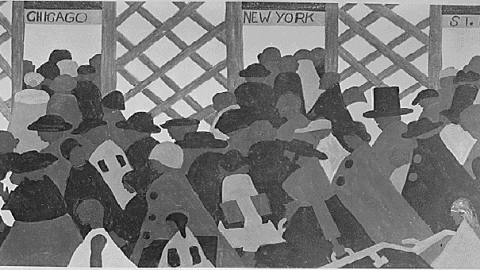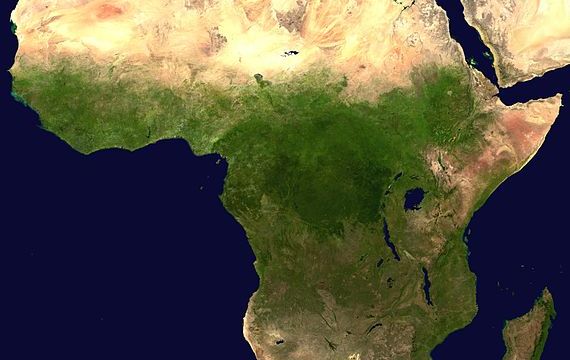Reading The Warmth Of Many Suns

The Warmth Of Many Suns by Isabel Wilkerson is such a good book I am almost tempted to go back to school to become a professor just so I can put it on the required reading list for my class. The book is a chronicle of the Great Migration of six million African Americans from the South to the North during the 20th century. Wilkerson is an accomplished storyteller, but the book really gets its strength from combining the intimate narratives of three migrants with historic events, economic data, and sociological research to paint a detailed picture of this massive black exodus. Usually I comment on books I’ve already finished, but I’ve decided to write about this book as I read it. So you will be seeing more about The Warmth Of Many Suns on this blog in the coming days.
One of the most interesting parts of the book is where Wilkerson relates the experiences of America’s 20th century black migrants to the experiences of foreign emigrants. There was no little irony in the fact that both groups were headed towards the New World.
“Those who would tough it out in the North and West were ‘not willing to risk relocation in the South because of possible greater advantages in their current location,’ wrote the sociologists Wen Lang Li and Sheron L. Randolph in a 1982 study of the migrants.
This would suggest that the people of the Great Migration who ultimately made lives for themselves in the North and West were among the most determined of those in the South, among the most resilient of those who left, and among the most resourceful of blacks in the North, not unlike immigrant groups from other parts of the world who made a way for themselves in the big cities of the North and West.”
Excerpt from The Warmth Of Many Suns
I felt a certain amount of poignancy with each turn of the page, mostly because some of the stories in this book are similar to the ones I’ve heard myself, in bits and pieces and oft repeated anecdotes, straight from the mouths of my own relatives who migrated to Washington D.C., Philadelphia, New York, and Boston back in the forties. My own father migrated to New York City from South Carolina in the late fifties, where he and some of his cousins who had preceded him washed as many as a hundred cars a night in a New York City parking garage. What were the results of my father’s experience?
He decided to return to college back in South Carolina and complete his degree requirements.
And he has had no interest in washing a car as long as I can remember, preferring to press me or my brothers into service or pay someone to do it when we were not available.
Wilkerson’s ability to weave the results of her painstaking historical research into the narrative is what made me want to put it on a required reading list. In some places, it was as if she had taken a standard history book and inserted the other half of the story, the part we’ve always known was there that is usually left out of the official account of American history.
“But the masses did not pour out of the South until they had something to go to. They got their chance when the North began courting them, hard and in secret, in the face of southern hostility, during the labor crisis of World War I.”
Excerpt from The Warmth Of Many Suns
The half a million blacks who left the South during World War I were sorely missed.
“We must have the Negro in the South. It is the most pressing thing before this State today. Matters of governorships and judgeships are only bagatelle compared to the real importance of this negro exodus.”
Macon Telegraph
Excerpt from The Warmth Of Many Suns
The pages are getting heavier but I am still reading.

Photo credit: Jacob Lawrence, Panel 1 from Migration of the Negro series





